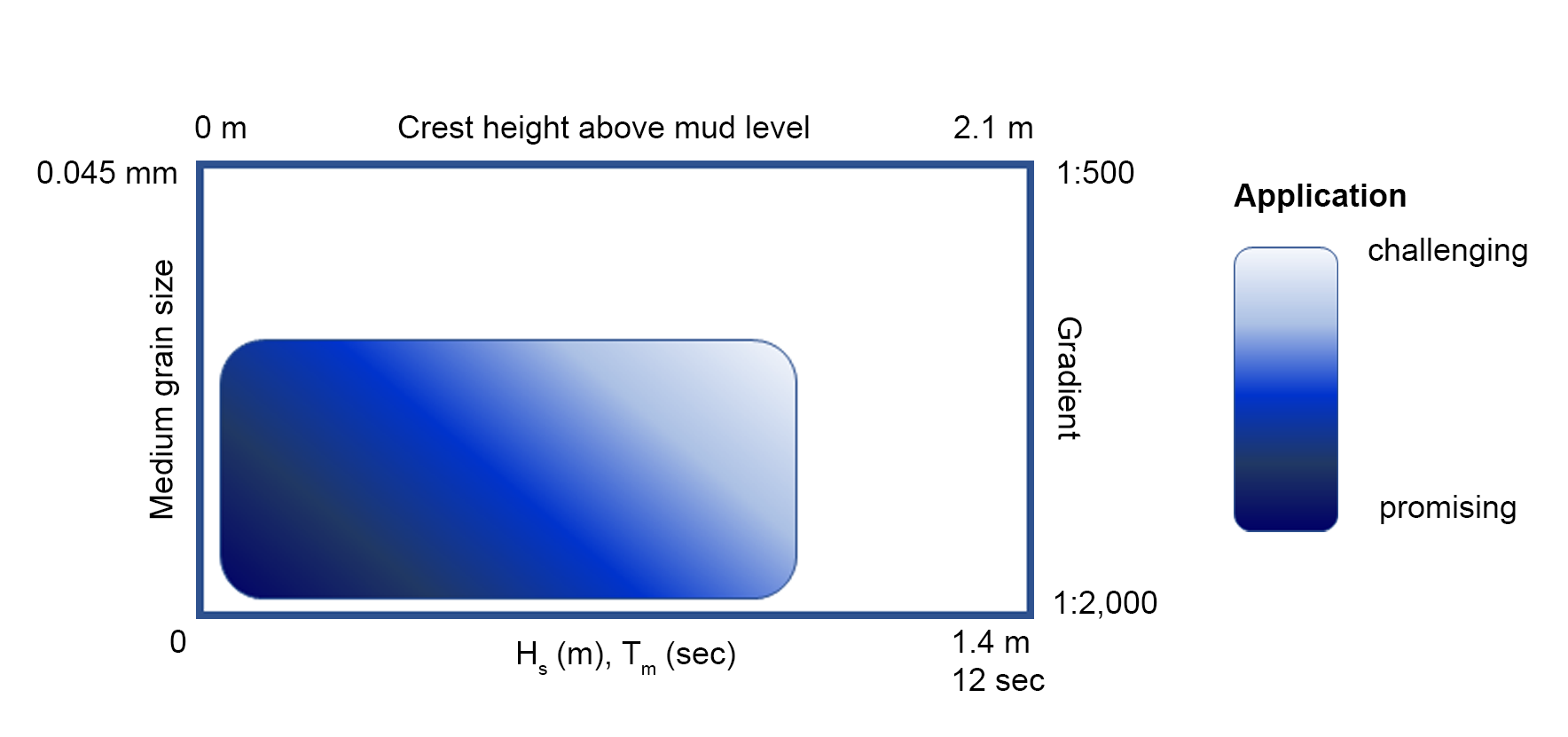

Physical models determine the optimal design of the actual breakwaters. The strength of the bamboo poles was tested during field testing of the fences. Durability information of bamboo is derived from experiences using bamboo in Thailand. Local people are informed of and engaged in the planned activity. With technical support, local people construct breakwaters, i.e. T-shaped fences from natural materials (bamboo). Permeable T-fences do not inhibit sediment input and create calm water conditions for sediment deposition. The long-shore parts break the waves and the cross-shore elements catch sediments suspended in long-shore currents. The gaps in the long-shore parts improve sediment input into the fields created by the fences during flood tide, while drainage is accelerated through the openings during ebb tide, thereby accelerating the soil consolidation process in the fields.
Successful design and construction depend on results from numerical modelling, observations from coastline changes, records of erosion and sound execution of T-fence construction and construction supervision.
The following boundary conditions must be fulfilled to ensure that the fences are effective:
- Muddy environment; medium grain size diameter of top layer of the mud d50 < 0.03 mm
- Significant wave height Hs < 0.90 m
- Mean wave period Tm < 8 s
- Small gradient of the tidal flat < 1:1000
- Clearance of the crest of the construction < 1.40 m
Involvement of technical departments and local authorities and people in the planning, design and construction process was important to ensure acceptance, support, long-term commitment and ownership. The most effective way to restore eroded foreshores is to use permeable t-fences which create calm water conditions for sediment deposition and reduce erosion. Construction of the T-fences must follow quality standards and must be well supervised. This cost-effective approach will only be feasible within a specific set of boundary conditions (see graphic below). If these limiting criteria are exceeded to only a small extent, adaptations such as strengthening the fence with concrete poles must be considered. If the limiting criteria are exceeded to a large extent, use of T-fences is not feasible. Other factors to be considered are location of the fences to minimise lee erosion, as well as proximity to the shoreline and length of submergence periods to minimise damage by shipworms. The duration of submergence and exposure to waves also affect the effort required for maintenance.